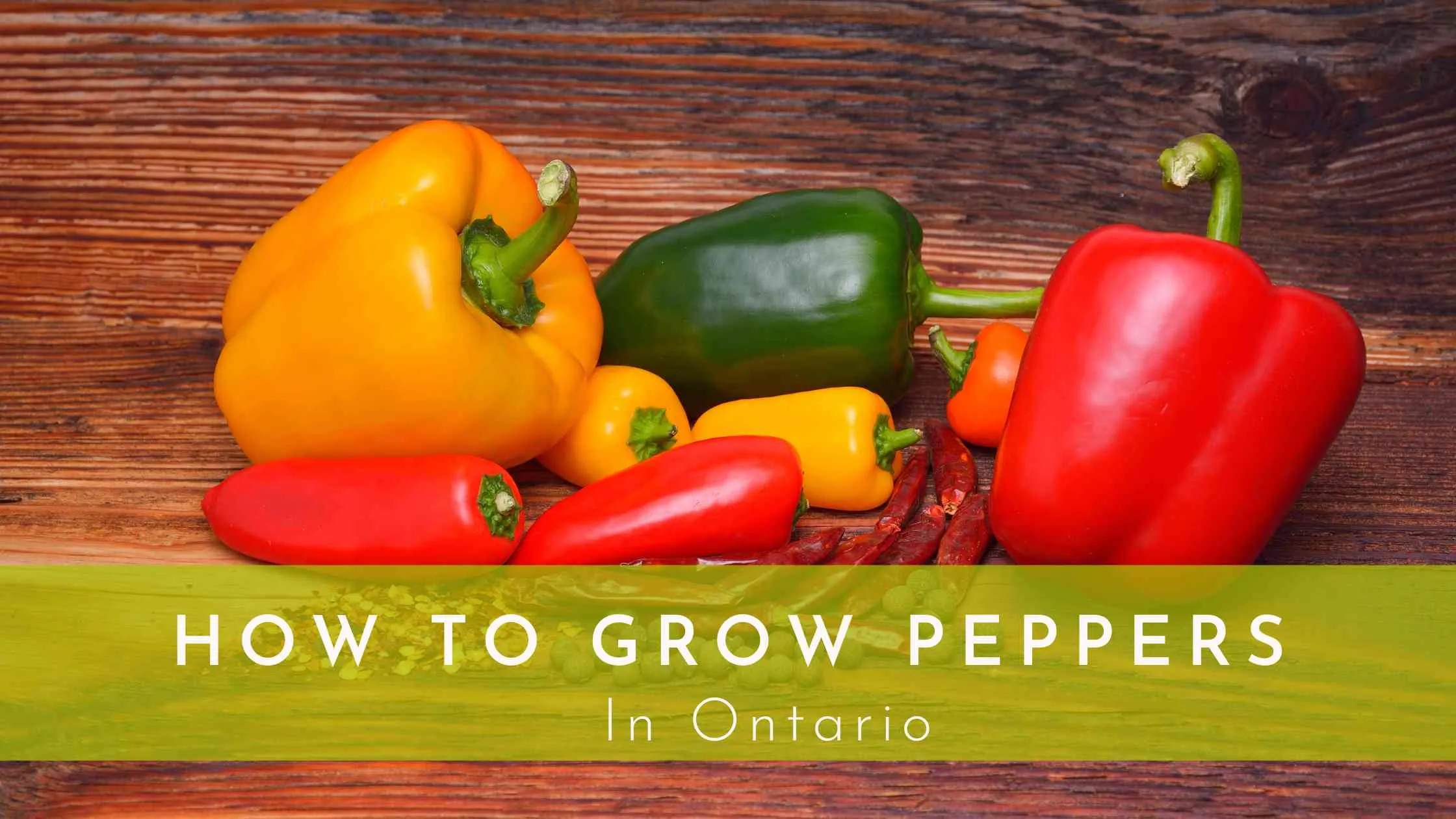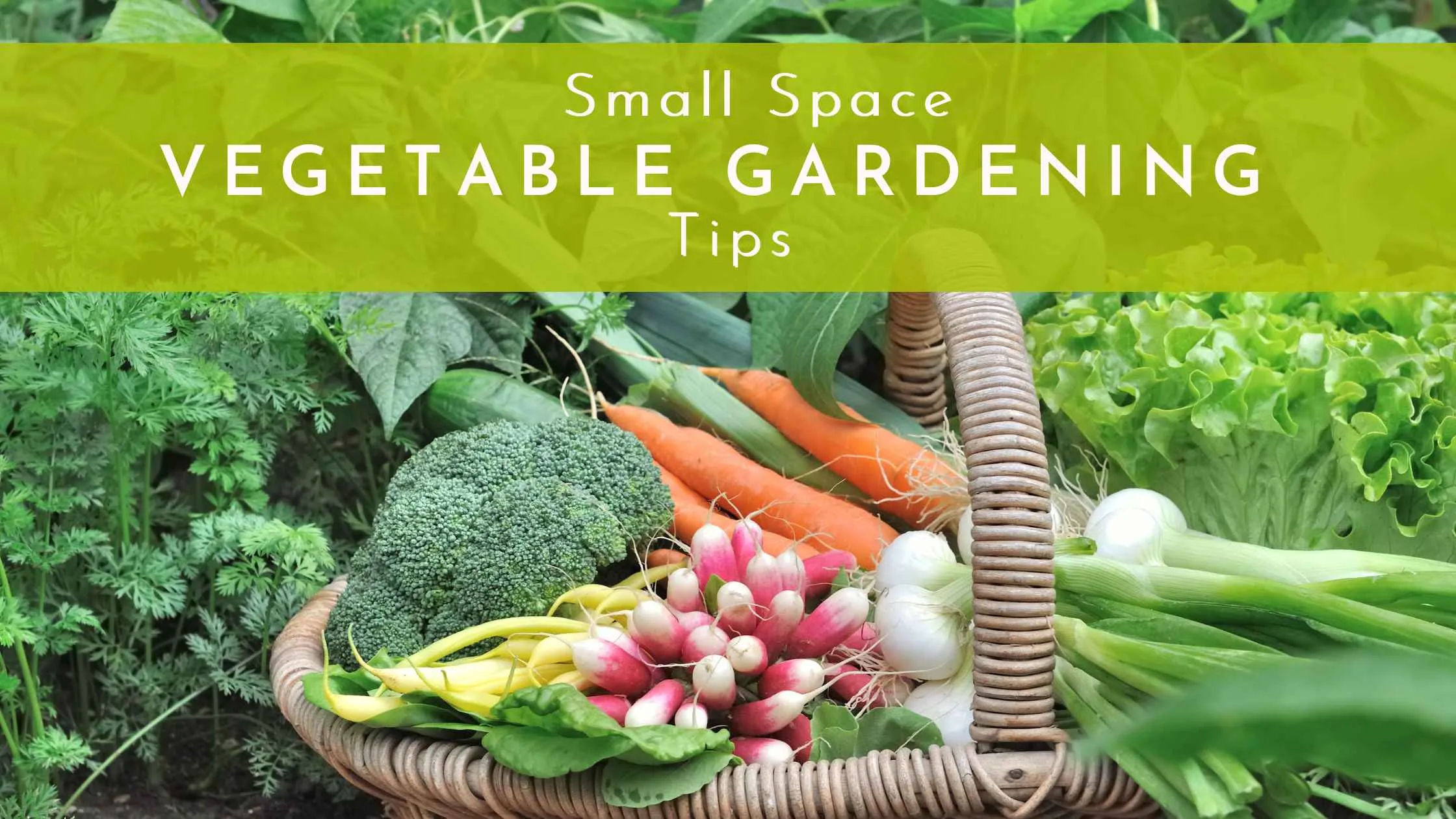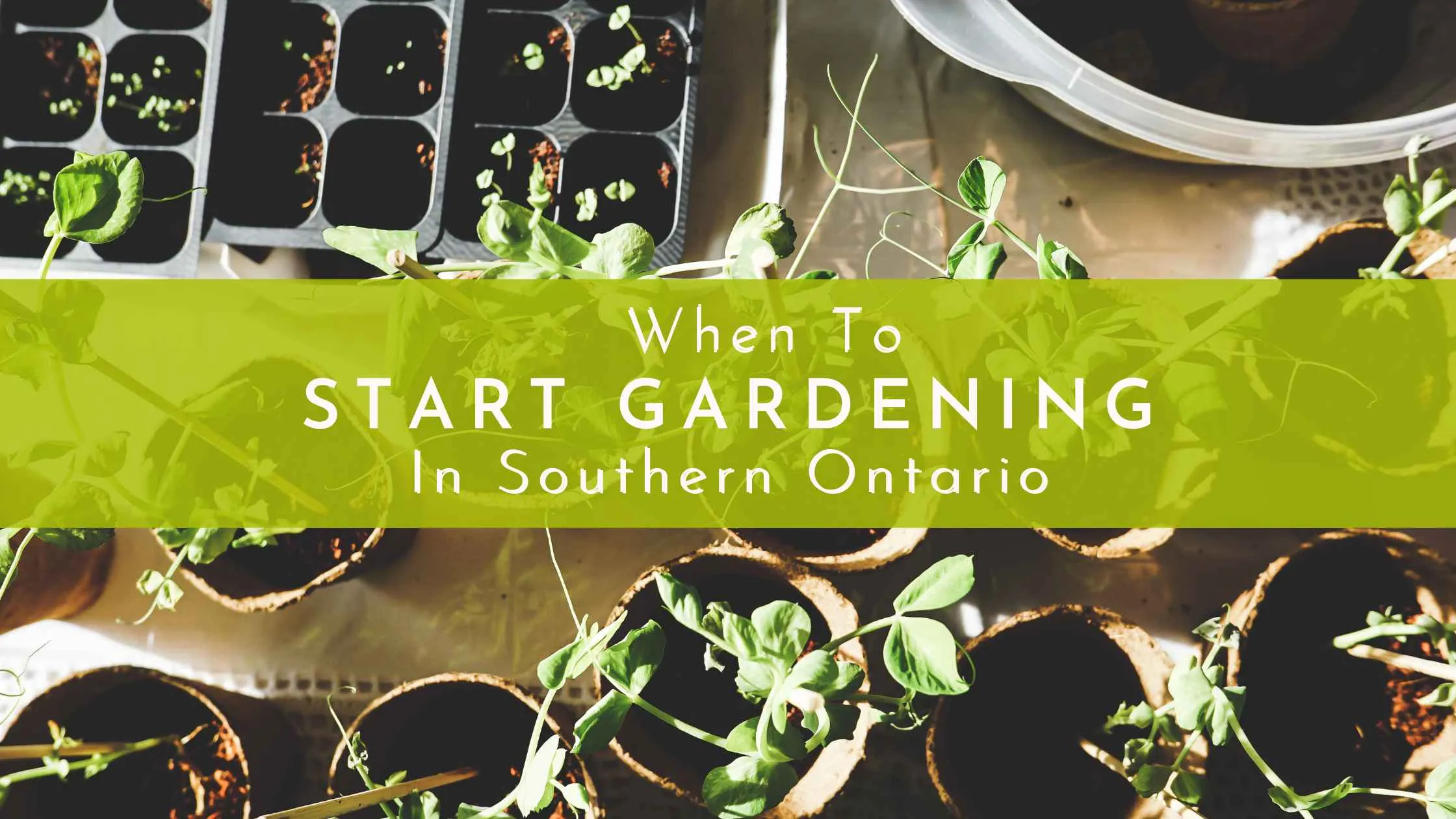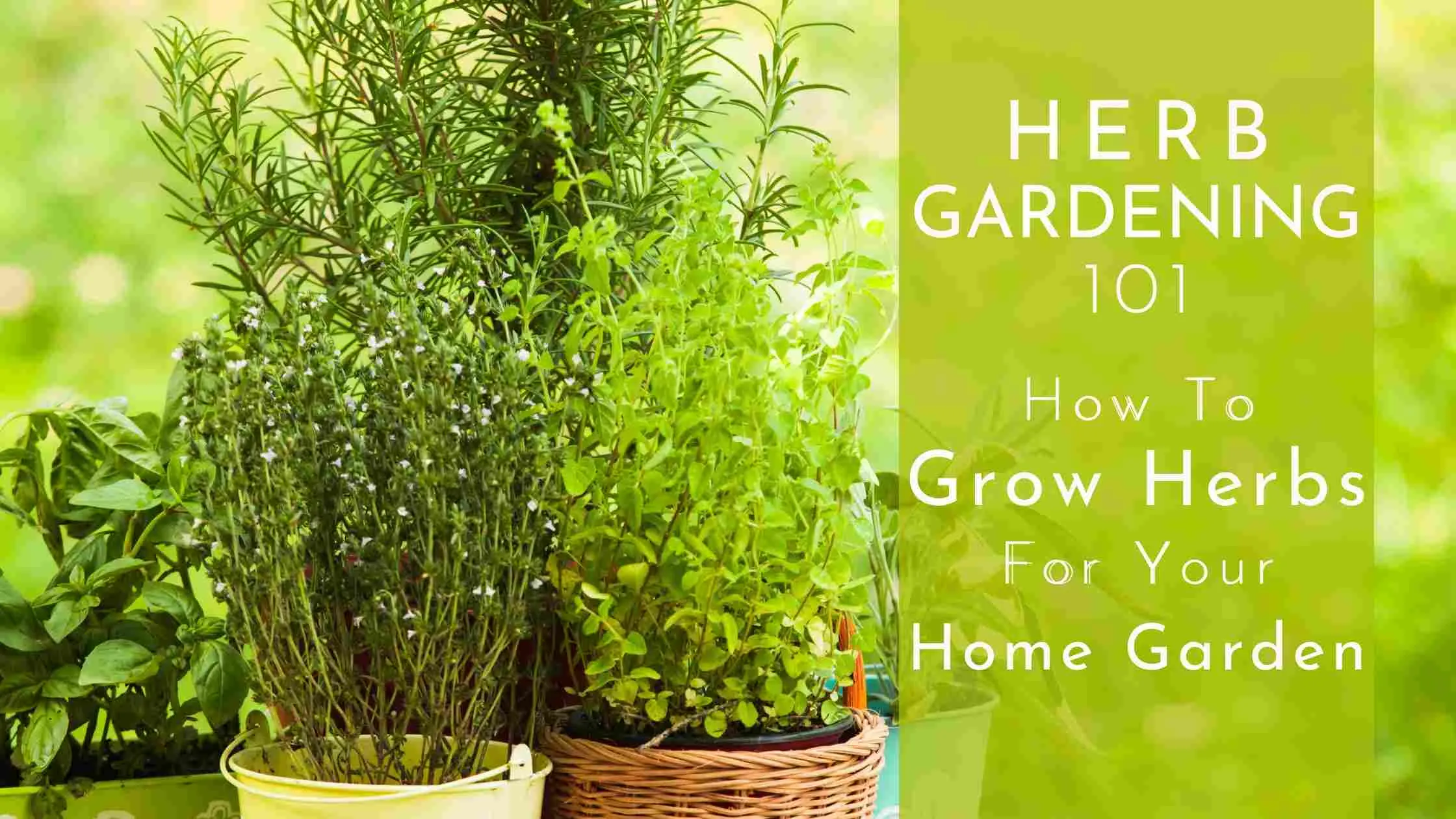How To Grow Carrots In Small Spaces: All You Need To Know
Ask anyone and I’m sure they’re familiar with carrots.
Like many homegrown crops, the crunchy carrot tends to be sweeter and more flavorful than its store-bought equivalent. But many people find them hard to grow.
In this article, you will learn home to grow carrots in your small garden.
Let’s begin.

About Carrots
Carrots (Daucus carota) originated in Afghanistan. They add color to any meal and can be eaten cooked or raw.
Carrots used to be purple and yellow, not orange. The color is due to pigments called carotenoids. The yellow color is from lutein, purple from anthocyanin, and red from lycopene. Modern carrots get their orange color from pigments called alpha- and beta-carotene. Beta-carotene is metabolized in the human body into vitamin A, which is necessary for healthy eyes, general growth, healthy skin, and resistance to infections.
Carrots are biennials: In the first year, they use their leaves to gather energy from the sun to build a big, starchy root. Then when the weather gets cold, carrots convert their starches to sugars to act as a kind of antifreeze - so the roots become sweeter in winter. In the spring they use that stored energy to send up a tall umbel of white flowers (similar to Queen Anne’s Lace).
Site Selection
For carrots to grow well find a spot that gets six to eight hours of sun a day or with a little shade in the late afternoon. The soil should be loose, sandy, and well-drained otherwise the carrots will mature very slowly with rough roots if the soil they grow in is too heavy.
Carrots can be grown in small gardens - containers or even flower beds - as long as the soil is not compacted. Make sure that the container is at least 12 inches tall with loose soil.
Spacing, Depth, and Support
Correctly spacing carrots is an important step to harvesting a healthy crop, but it's not always easy.
Plant your seeds 1/4 inch below the surface of the soil. You can start off planting them two to three inches apart.
The seedlings will be okay if some of them sprout 1/2 inch apart, but as they begin to grow they would require a lot of thinning as they typically require about three inches of space between them.
Snipping or pinching the seedlings off at the soil line is the best way to thin the crop and avoid hurting the nearby roots.
Alternatively, you can leave more space between each planting, so that you spend less time thinning the crop. It also helps ensure that you maximize the amount of produce you reap for your efforts, as you don’t have to snip off the heads unnecessarily.
Note: Carrots don't need support and they don't like to be transplanted or disturbed, either.
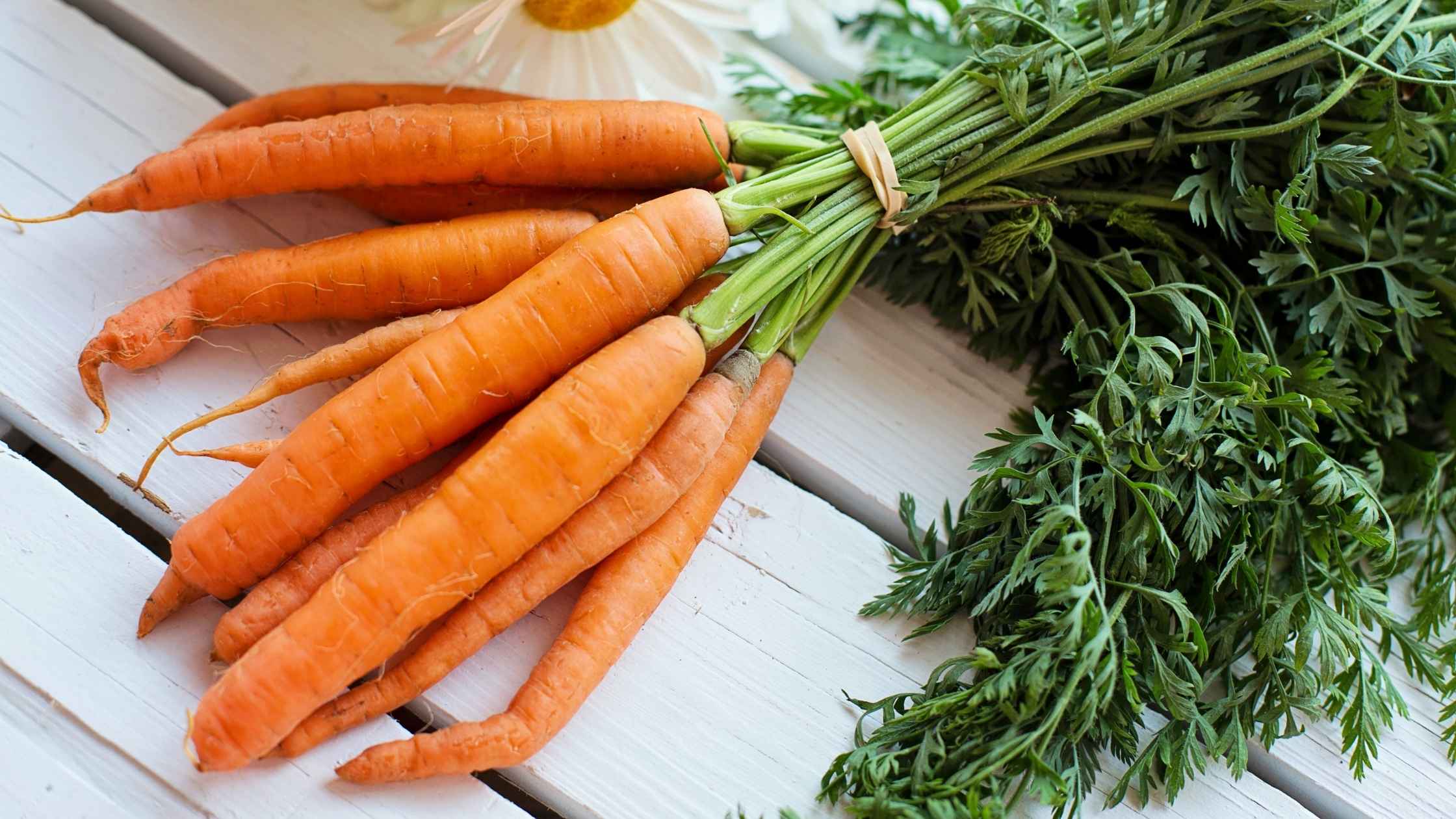
Carrot Care
Light
The carrot foliage needs full sun to partial shade for the roots to grow quickly and develop their sugars.
Soil
Carrots need loose, well-draining soil. Rocks and clumps will cause the carrot roots to split and become deformed. Carrots prefer a slightly acidic soil—in the range of 6.0 to 6.8.
Water
Give your carrots at least one inch of water every week. Mulching will help conserve water and keep the soil cool.
Temperature and Humidity
Carrots are typically grown as annuals in all zones and in all climates.
However, they grow best in the cool temperatures of early sprint or late fall and are tastiest when nighttime temperatures average about 13 degrees Celcius (55 Fahrenheit) and daytime temperatures average 24 degrees Celcius (75 Fahrenheit. In warmer climates, carrots are sometimes planted as a late fall and winter crop.
Fertilizer
If your soil is not rich in organic matter, supplemental feeding is required about two weeks after the carrot tops emerge. Any good quality organic vegetable fertilizer will do.
Note: Because these biennials are grown for their roots, don't go overboard with nitrogen fertilizer, which helps with foliage growth.
Pruning
Thin seedlings of growing carrots to 1 to 4 inches (2.5-10 cm.) apart when they are 2 inches (5 cm.) in height.
Types of Carrots
Both hybrid and heirloom carrot species come in many different shapes, colors, sizes, and even tastes. Some examples are Belgium white, purple dragon, and Parisian heirlooms that tend to be round.
There are 4 main types of carrot, each grown for its unique qualities: Danvers, Nantes, Imperator, and Chantenay.
Today, the most commonly bought carrot in grocery stores is the Imperator carrot.
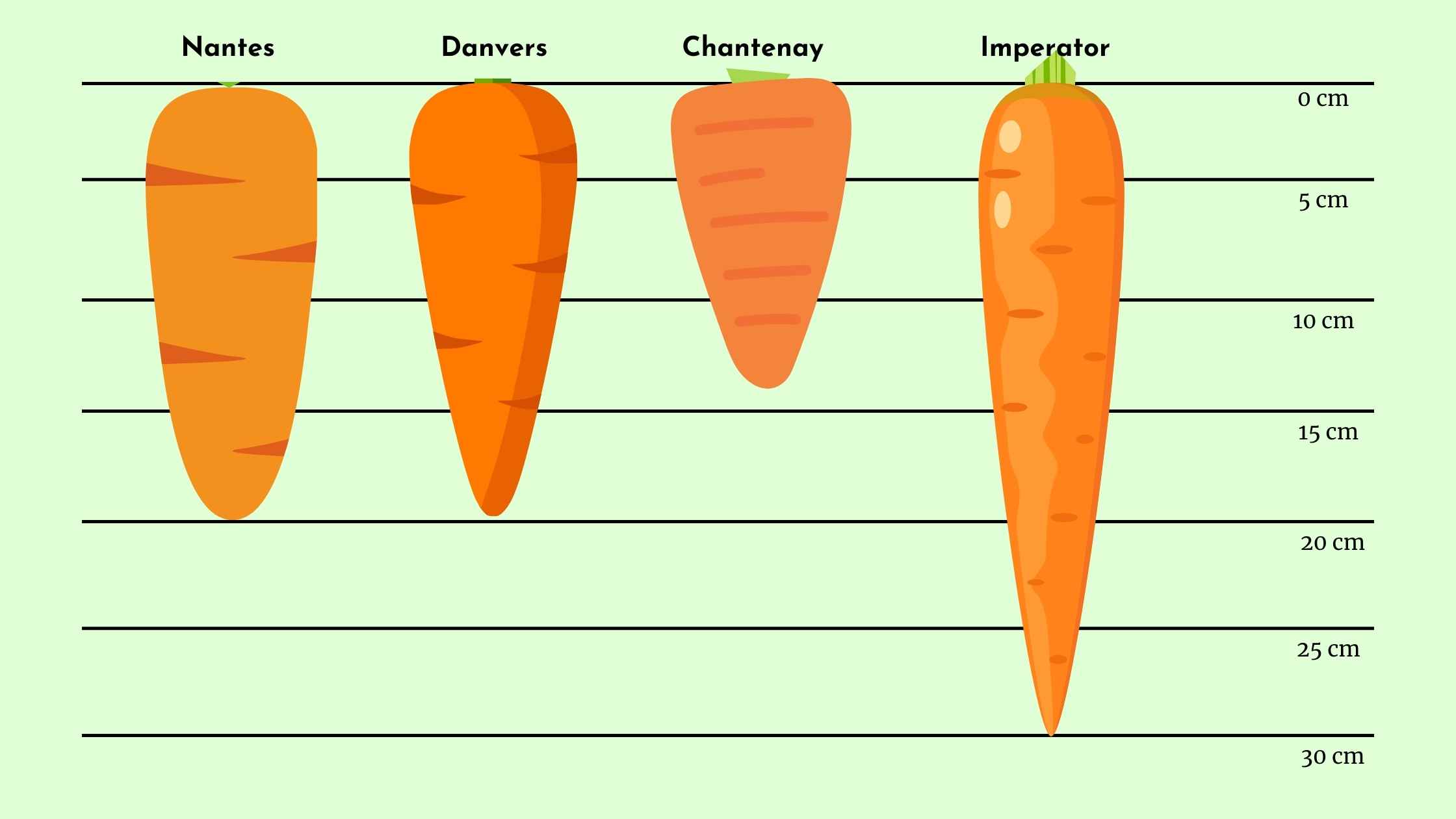
Nantes carrots:
Nantes carrots have a long, cylindrical shape with a blunt end. They grow well in a wide range of conditions, including areas where it may be difficult for other types of carrots to grow. This includes gardens with heavier soils containing more clay. Due to this fact, Nantes carrots are often a popular choice with home gardeners. Some Nantes carrot varieties include Scarlet Nantes, Napoli, Bolero, and White Satin.
Nantes carrots are harvested from late summer through fall. Sow seeds for carrots with other frost tolerant crops as soon as the soil has warmed in the spring and all danger of frost has passed. Prepare a bed that has been plowed down to a depth of 8-9 inches (20.5-23 cm.). Break up clumps and rake out large rocks and debris. If you have very heavy clay-laden soil, consider growing the carrots in a raised bed or large container.
Chanteney carrots:
Chantenay carrots also do well when grown in less-than-ideal soil conditions.
Chantenay carrots are short, stout carrots with light orange flesh and orange-red colored cores. For consistently sweet and tender carrots, harvest these robust roots early. They mature in 65-75 days to 4- to 5-inch (10-13 cm.) long and 2- to 2 ½-inch (5-6.5 cm.) thick. Otherwise, they may become coarse and tough when grown past maturity, especially during the hot summer months.
Chantenay carrot varieties include: Red Cored Chantenay, Royal Chantenay, and Hercules.
Chantenay carrots are commercially grown for canned and processed carrots because of their high yields. They can be eaten fresh, frozen, or canned, with their taste usually described as sweet and crisp.
Like all carrots, Chantenay carrots are high in carotene and fiber. The two main types of Chantenay carrot seeds available to gardeners are:
- Red-cored Chantenay - these have a redder core and blunt tip.
- Royal Chantenay - which has an orange-red core and a tapered tip.
Danvers carrots:
Danvers carrots are medium-sized carrots, often called “half size”. They have a small core and are tapered in shape and size with a deep orange color. Their rich flavor, especially when young, made them once the carrot of choice. The mature roots however can become fibrous.
Danvers were an early orange cultivar as previously favored selections were white, red, yellow, and purple. Danvers carrots are popular for their ease of care and typically perform better than many others in their ability to form nice roots even in heavy, shallow soils.
Danvers 126 and Danvers Half-Long are the most commonly planted variety. The roots can grow 6 to 7 inches long (15-18 cm.). Danvers is a biennial plant that can take 65 to 85 days from seed to harvested root.
Imperators carrots:
Imperator carrots are a very common choice for commercial carrot farmers due to their high sugar content.
You know those “baby” carrots you buy at the supermarket, the kind the kids' love? Those are actually Imperator carrots, and most likely the regular-sized carrots you buy at the grocer's as well.
These carrots tend to grow much longer than many other types. They are deep orange in color, tapered to a blunt point and around 6-7 inches (15-18 cm.) long.
They tend to be coarse and not as sweet as other carrots, but their thin skin makes them easy to peel. Because they contain less sugar and have a bit tougher texture, they also store better than other types of carrots, making them the most common carrot sold in North America.
Carrot cultivars included within this type are Atomic Red, Cosmic Red, Tendersweet, and Autumn King.
Miniature carrots
Miniature carrots are roots that are harvested before growing too large. While some may grow only to small sizes, others within this category may also grow to form round radish-like roots. These “baby” carrots are great alternatives for home gardeners, as they can easily be planted in containers.
Miniature and round carrot varieties include: Paris Market, Babette, Thumbelina, Little Finger, Short ‘n’ Sweet.
How To Grow Carrots
Now let’s get into how to grow carrots so that anyone can be successful.
Let’s get started.
Growing Carrots From Seeds
Carrots grow well in cool weather. You can begin sowing carrot seeds or planting carrot seedlings as soon as the soil can be worked in the spring. Carrot seeds can be sown about 2 to 3 weeks before the last spring frost date. Ideally, you want the soil to have both dried out and warmed up a little after the winter.
Seeds can begin to germinate after the soil temperature is at least 40°F (approximately 4.5 degrees celsius). They germinate best at 55-65°F (13-18 C), not exceeding 75°F (24 C). You can succession plant carrots every couple of weeks throughout the spring. For a fall harvest, sow seeds in mid- to late summer—starting about 10 weeks before your first fall frost.
High summer temperatures reduce growth, decrease quality, and cause bitter or off-flavors to develop. So In warmer climates, you might have better luck growing carrots in the fall and through the winter.
Growing Carrots In Raised Beds
A raised bed provides carrots with the soil conditions to reach their full potential: deep, loose soil and consistent moisture. These are the perfect conditions for them to develop long, straight roots with beautiful colors and a satisfying crunch.
- Loosen the soil to a depth of 12" and rake the surface smooth.
- Distribute the seeds evenly over the area at about twice the recommended density (sow about 30 seeds per square foot). Sowing thickly helps compensate for carrots' typically irregular germination rate.
- Barely cover the seeds with ¼" to ½" of soil. Water well.
To prevent deformed roots as the carrots are growing, keep the beds free of weeds. Don't be afraid to thin them again later, you can use the tiny carrots in salads. When you've finished thinning, your carrots should be far enough apart so they don't rub shoulders when mature.
How to Grow Carrots in Containers
When growing carrots in containers make sure the containers are deep enough for the carrots’ development. The containers should have drainage holes, as root crops may rot if left in soggy soil.
Miniature and Oxheart varieties are most suitable when you grow carrots in containers. The roots of these carrots are only 2 to 3 inches (5-7.6 cm.) long at maturity. They are sometimes called Amsterdam varieties.
Container-grown carrots need regular moisture. Containers require watering more often than crops in the ground. Mulch can help retain moisture when you grow carrots in containers and help keep weeds down. Growing carrots in containers, as with other root crops, produce better results as there is little root disturbance from activities such as pulling weeds.
Containers allow the flexibility of moving the crop to a cooler spot or covering if temperatures go below 20 F. (-7 C.). Container carrots can sometimes be overwintered for an early spring harvest. Carrots that are over-wintered can be used as needed, as growth will slow in temperatures below 55 F. (13 C.).
Can You Grow Carrots From Carrot Heads or Cuttings?
Carrots, the root plant, and orange vegetable cannot be grown by planting just the top of the vegetable. This is because it is actually a taproot – once removed from the plant, it can’t be regrown.
However, the carrot plant (the green bushy part of the crop), can be regrown from carrot tops. Growing carrot plants from carrot tops are common in children’s gardens, because it is very easy to grow, requires no special equipment, and produces visible results in just a few days.
Carrot tops make pretty houseplants at a sunny window and their fern-like foliage is beautiful in an outdoor container garden. Eventually, white, lacy flowers will bloom.
To plant: slice off the top of your carrot for the leaves to sprout from. This will eventually grow into a carrot plant:
- Place the top slice into a container with water, and find a sunny spot to place it, preferably a south-facing window.
- You will notice sprouts of green foliage beginning to appear as quickly as a couple of days.
Keep the carrot indoors until it’s large enough to transplant outdoors into your garden. Your plant will need to be introduced to the outdoor climate and direct sun gradually in a process called hardening off.
Where Do Carrot Seeds Come From?
You may be wondering where carrot seeds come from? How do we get the seeds that we then plant to produce carrots? The top of the carrot (the bushy part), eventually flowers and once pollinated produces seeds. These seeds are what is harvested to product our next batch of carrot seeds.
Can You Grow Carrots From Carrots?
If you have a whole carrot in your kitchen that has started to grow new leaves and you don’t plan to use it just yet, you can plant the carrot so it can keep growing while it waits for you to be ready to put it to use.
Plant your carrot with the pointed end down so that the sprouting leaves are above the level of the soil. Provide your carrot with at least one inch of water per week. If the weather is extremely hot or dry where you live, your carrot may need more water than that—just keep an eye on the condition of the greens for a window into the carrot’s hydration level.
If you’re planting more than one carrot, space them out six to eight inches apart.
Carrot vs Parsnip:
Carrots can often be mistaken for parsnips because not all carrots are orange. Many types of carrots and parsnips are the same color and shape. Carrots and parsnips (Pastinaca sativa) also belong to the same family. The biggest difference between the two is their taste; Carrots are sweet and parsnips have a spicy bite. Often they are both used in the same recipe to bring flavor to a dish.
When To Harvest Carrots
Growing carrots —or any root vegetable—can be tricky because you can't see how well they're doing until you harvest. When to harvest your carrots will depend on the variety you are growing. The average days to harvest is about 50 to 75 days from seed with most varieties ready for harvest 65 to 75 days after planting.
The days to harvest on your seed packet will guide you as to when to start harvesting. Test to see if the tops of your carrot plants have filled out to the expected diameter by feeling just below the soil surface. But sometimes the only true test is to lift one of the carrots out and taste it.
Don't harvest too soon, thinking you will get sweet baby carrots. Small carrots in the store are either a particular small variety or large carrots that have been ground down to baby-size. Immature carrots will taste bland as they have not had time to develop their full sweetness. Often sweetness develops only after the crop has experienced a frost.
If the soil is very soft, you can twist and pull the carrots from the soil. To be on the safe side, it is wise to loosen the soil slightly before harvesting, making sure not to stab the carrots in the process.
Remove the leaves immediately after harvesting as the leaves will continue to take energy and moisture from the roots, leaving them limp, and lessening the sweetness of your carrots.
Companion Plants
Carrots can be planted with beans, brassicas, chives, leeks, lettuce, onions, peas, peppers, pole beans, radish, rosemary, sage, and tomatoes.
Avoid planting with dill, parsnips, and potatoes.
If you’re growing carrots indoors you have to make sure that your container is large enough to maintain enough space between these root crops so they don't compete for available phosphorus.
Carrots planted near tomatoes may have stunted roots but will have great flavor. Chives also benefit carrots.
To prevent the soil from crusting over and making it difficult for carrot seeds to sprout, plant the carrot seeds with radish seeds, which will sprout first and loosen the soil.
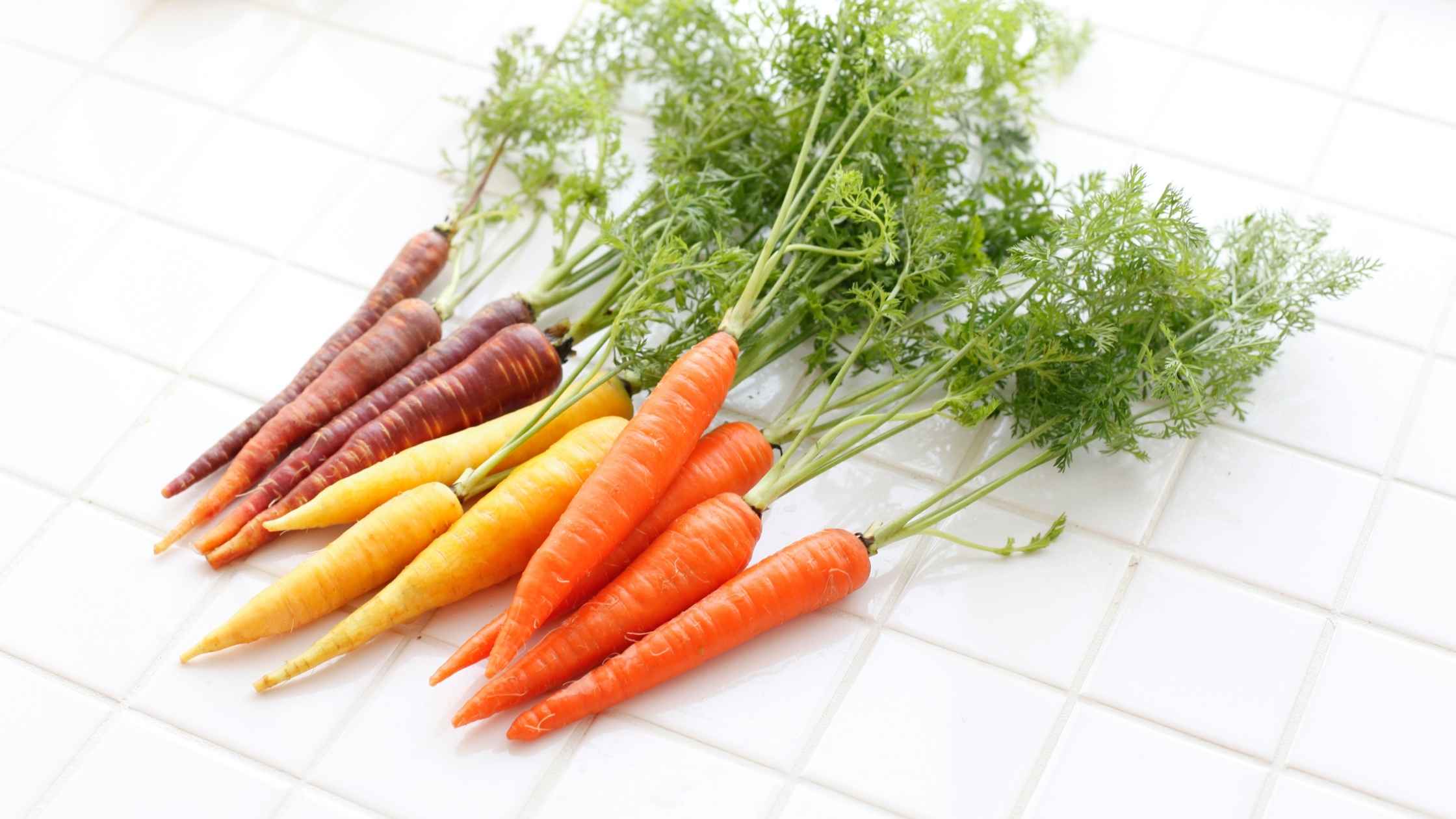
Overwintering
You can leave carrot plants in place over the winter. Make sure you weed the area thoroughly before the first frost. Heavily mulch with about three inches of straw or fallen leaves. You can even install a fabric row cover if you live in a very cold climate.
The carrot tops will die but the roots will continue gathering their sugar to survive the cold weather. Even if left in the ground into winter, the roots can still be quite delicious.
Harvest these carrots before, or at the latest, by early spring else they will start to form flowers.
Common Pests and Diseases
These pasts and diseases are a factor if you are growing your carrots outdoors or using soil that has been infected.
The biggest pest that attacks carrots is the carrot rust fly. It lays its eggs in the soil near the carrot top. When the eggs hatch, the larvae work their way down into the soil and then into the carrot's roots, where they feed and create tunnels through the carrot. Carrot weevils can do similar damage.
You can avoid or reduce the chances of being impacted by these pests by rotating where you plant each year. Another (easier)method is to grow your carrots under row covers (garden fabric) if you are growing them outside.
Nematodes (microscopic worms), can become a problem later in the season, causing badly deformed roots. Heating the soil through solarization can kill nematodes. If you are struggling with carrot nematodes in a particular spot, rotate to another crop and plant carrots elsewhere.
There are many other animals that will want to eat the tops of your carrots and a few that will dig deeper. Deer, groundhogs, rabbits, opossum, and several others will need to be kept out of the garden. The only effective method is fencing.
There are also some leaf spot and bacterial diseases that can affect carrots. These include Alternaria leaf blight, carrot yellows, and bacterial soft rot. There is not much you can do if your plants are infected, so keep a close eye on your plants and remove any that are showing signs of disease.
Clean up all debris at the end of the season and move your carrots to a different section of your garden next year because these microorganisms can persist in the soil.
Can You Grow Carrots Hydroponically?
You now know that we can’t regrow the stump into a carrot in water but can you grow carrots in water, using other means?
The answer is yes, and no.
The kids' activity of putting the stump of a carrot in a glass of water, held by toothpicks much as you would do with an avocado pit, and watching carrot roots grow in the water can be fun for kids.
However, to actually grow the taproot, which is the carrot that we know, a medium culture hydroponics system is needed. Solution culture hydroponics systems do not provide the support needed for the root vegetable to grow. Carrots also make a healthy addition to any hydroponics system.
Conclusion
Growing carrots is fun and easy to do.
Growing carrots in containers provide you with a lot of flexibility - moving the pots depending on the weather and avoiding some of the known pests and diseases. Once you have quality seeds, good soil, proper drainage, a regular watering schedule, and our quick guide you will enjoy the success of growing your own carrots.


